I use wireless electricity everyday.
In my toothbrush:

And in my cell phone:

The method used in my devices is called Inductive Charging. I talk a bit more about it in my answer to this question. This is the most common and most practical form of transmitting energy wirelessly at the moment. But as many of the comments have noted, this is considered near field transmission. And with an effective range of only a few millimeters, it is very near field.
The amount of energy transferred and the efficiency of the transfer can be increased quite a bit (although still considered to be near field) by adding a capacitor to each of the inductor coils and tuning the resultant RLC networks to have a high Q factor at the same (resonant) frequency. A team from MIT did research into using inductive resonance as a wireless power transfer system.

The researchers have since formed a company called WiTricity to further develop the technology. While they still haven't brought a product to the commercial market, they have made some impressive demonstrations:
The term WiTricity was used for a project that took place at MIT, led
by Marin Soljačić in 2007. The MIT researchers successfully
demonstrated the ability to power a 60 watt light bulb wirelessly,
using two 5-turn copper coils of 60 cm (24 in) diameter, that were 2 m
(7 ft) away, at roughly 45% efficiency. The coils were designed to
resonate together at 9.9 MHz (≈ wavelength 30 m) and were oriented
along the same axis. One was connected inductively to a power source,
and the other one to a bulb. The setup powered the bulb on, even when
the direct line of sight was blocked using a wooden panel. Researchers
were able to power a 60 watt light bulb at roughly 90% efficiency at a
distance of 3 feet. The research project was spun off into a private
company, also called WiTricity.
It's important to note that the distance between the transmitter and the receiver plays a crucial factor in determining how much energy can reliably be transferred. As can be seen in this paper based on the MIT project, the decay in voltage with respect to distance between the coils is exponential:

But there are many other methods such as microwave and laser that are capable of much greater distances. However, these methods are very directional and so are applicable over a much smaller area than Tesla's proposed Wardenclyffe Tower which would be omnidirectional. There are also many other factors to consider when implementing one of these methods:
Microwave:
Power transmission via radio waves can be made more directional,
allowing longer distance power beaming, with shorter wavelengths of
electromagnetic radiation, typically in the microwave range. A
rectenna may be used to convert the microwave energy back into
electricity. Rectenna conversion efficiencies exceeding 95% have been
realized. Power beaming using microwaves has been proposed for the
transmission of energy from orbiting solar power satellites to Earth
and the beaming of power to spacecraft leaving orbit has been
considered.
...
For earthbound applications a large area 10 km diameter receiving
array allows large total power levels to be used while operating at
the low power density suggested for human electromagnetic exposure
safety. A human safe power density of 1 mW/cm2 distributed across a 10
km diameter area corresponds to 750 megawatts total power level. This
is the power level found in many modern electric power plants.
...
Wireless high power transmission using microwaves is well proven.
Experiments in the tens of kilowatts have been performed at Goldstone
in California in 1975 and more recently (1997) at Grand Bassin on
Reunion Island. These methods achieve distances on the order of a
kilometer.
Laser
Advantages of laser based energy transfer compared with other wireless
methods are:
- collimated monochromatic wavefront propagation allows narrow beam cross-section area for energy transmission over large ranges.
- compact size of solid state lasers-photovoltaics semiconductor diodes fit into small products.
- no radio-frequency interference to existing radio communication such as Wi-Fi and cell phones.
- control of access; only receivers illuminated by the laser receive power.
Its drawbacks are:
- Laser radiation is hazardous, even at low power levels it can blind people and animals, and at high power levels it can kill through
localized spot heating
- Conversion to light, such as with a laser, is inefficient
- Conversion back into electricity is inefficient, with photovoltaic cells achieving 40%–50% efficiency. (Note that conversion efficiency
is rather higher with monochromatic light than with insolation of
solar panels).
- Atmospheric absorption, and absorption and scattering by clouds, fog, rain, etc., causes losses, which can be as high as 100% loss
- As with microwave beaming, this method requires a direct line of sight with the target.
And of course there is the "disturbed charge of ground and air" method used by Tesla. As far as the Tesla system goes, that got shut down because funding ran out and the stock market crashed. As for why it's not been tried since, it's primarily because such a system could not be strictly metered. Therefore, the power companies could not charge per usage and make lots of money. Without a way to monetize the technology, no investment into research and development will ever be made. That's the (conspiracy) theory, anyways. Although there are many other reasons why this method is either unfeasible or just outright wouldn't work.
I couldn't find an article with definitive numbers as to efficiency. But it's my guess that efficiency is the main reason you do not see this technology in more wide spread usage. However, it does exist, people like me (read: not rich) do have access to it, and it works quite well.
Edit:
I found a case study done by the Wireless Power Consortium, makers of qi charger for my phone, which states (emphasis mine):
In this section we compare the total power consumption in a 5-year
period
Case Study:
Average system efficiency of wireless charger N sys-wireless = 0.50 (50%)
Average system efficiency of wired power adapter N sys-wired = 0.72 (72%)
Assume that the average charging power is 2W.
So the wired part of their system has an efficiency of 72% and the wireless part has an efficiency of 50%. That is using an inductive method where the coils are a few millimeters apart. Compare that to the WiTricity from Joel which states an efficiency of 40% over 2 meters.
Factor in the additional costs associated with the extra circuity and components for a wireless system as compared to the cost of a length of copper wire and you can see why long distance wireless energy transfer is still considered impractical for mass market use.



